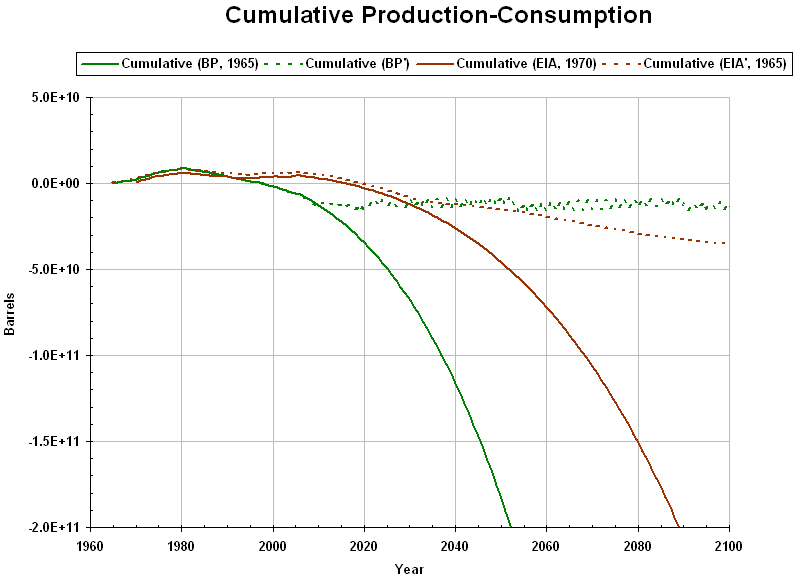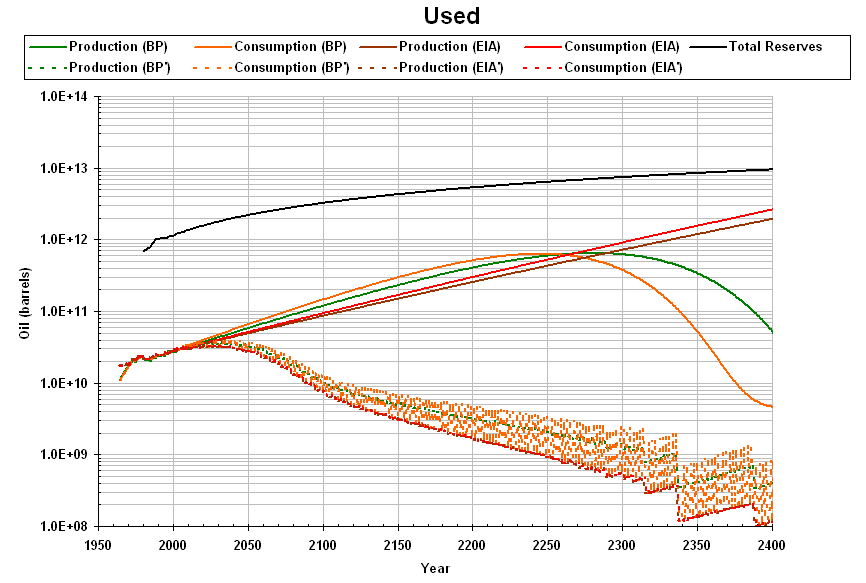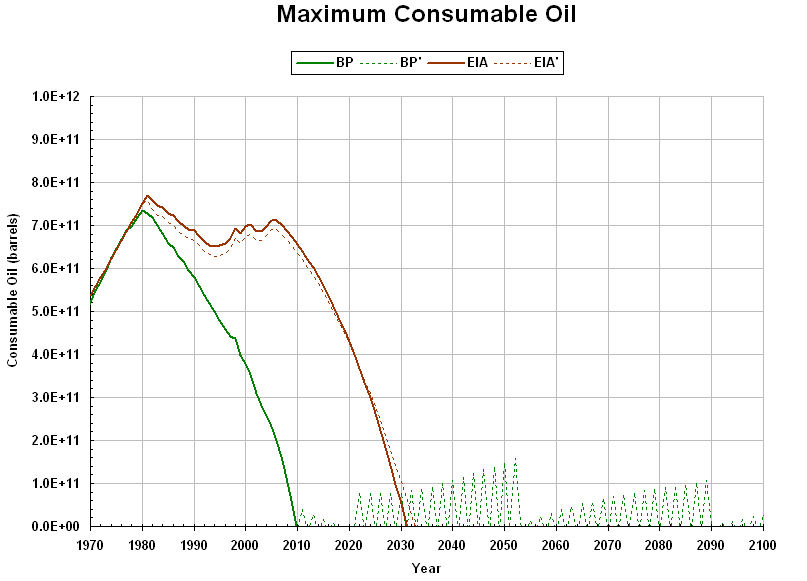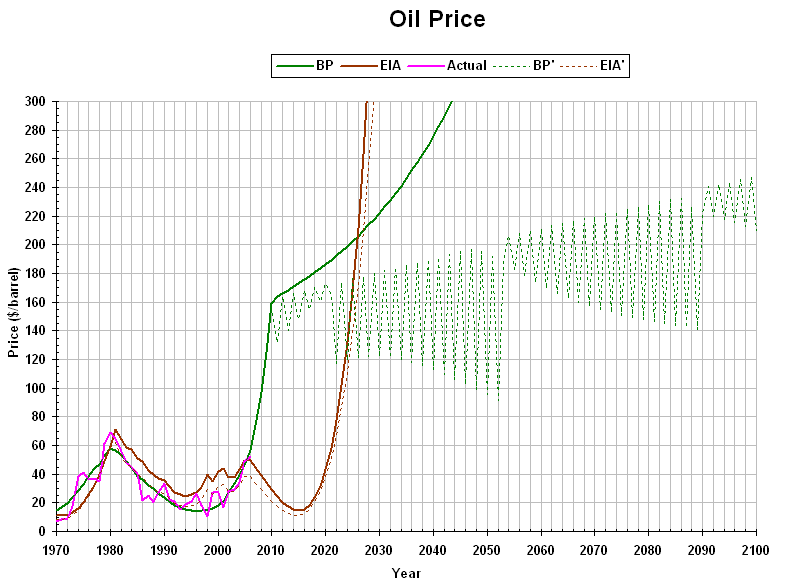World Oil
Applying the consumption model to world oil production and consumption (data through 2007), consumption will surge above production even though there are enough known reserves for production to keep up. Further, the model suggests that the total amount of oil may be at least 100 times the amount of known reserves.
Data from BP's Statistical Review of World Energy 2008 shows consumption above production since 1980, implying that the world has been drawing on previously produced oil for the difference. Data from the U.S. Energy Information Administration (EIA) is more equivocal.
If projections of BP data are correct, then consumption will be constrained to lower-than-desired production by the end of this decade; if projections of EIA data is correct, then this will occur within three decades.
In the following graphs, projections are given for BP and EIA data, which do not constrain consumption to production. Population from the footprint projection is used for those labeled with a prime (BP', EIA'), which includes production-constrained consumption. "Total Reserves" for a given year is the known reserves plus the production for the year.


The number of people who can use the oil is shown below. Projected population using the footprint is shown for comparison (FP).
If all excess oil (production less consumption) was available to make up the shortfall in a given year, then collection of it would have had to begin in the "start year" shown below:
If all known reserves in the start year were available for collection, then the maximum amount of oil available for use in any given year is shown below:
The price of oil is somewhat correlated to consumable oil (above). Following is the projected price of oil:
For data and calculations, see Simulations (Excel files).
For data sources, see BP's Statistical Review site and the U.S. Energy Information Administration (EIA).
For an analysis of U.S. oil using only domestic sources, see U.S. Oil.
© Copyright 2008 Bradley Jarvis. All rights reserved.





